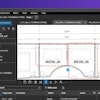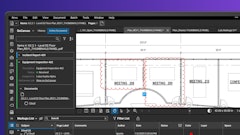During the course of a recent conversation, a contractor I was visiting with uttered the classic line "I never have as much money at the end of the year as I expect to." He was very curious as to why that keeps happening to him. Do you suffer from the same fate?
Before racing into 2008, this seems like a good time to talk about a task that many choose to blow off - creating an annual budget. The lack of an annual budget usually produces the end-of-year surprise just described.
An annual budget allows you to stay on top of your financial progress as your year unfolds. It arms you with the ability to reel in expenses before they kill your bottom line. Even better, the budgeting process forces you to think through your strategy and resource allocation. It forces you to account for every expense your company will suffer during the upcoming year. It helps you connect project profits to company net income.
In simple terms, your annual budget is a financial representation of your current business plan. Being able to explain and defend your budget to bankers and lenders leaves a strong positive impression on them. Knowing that you understand how your business makes money is something they really like to see.
Let's shift our discussion away from the "why to" budget and put in on the "how to" budget. Creating your budget takes three steps.
Step I - Initial pass
Step II - Adjust plan
Step III - Finalize & distribute
Your goal during the first step is to develop a draft budget that is consistent with your company's recent history. Have your bookkeeper or accountant provide copies of your financial statements for the last three years.
Look at the trends. If there has been a consistent growth pattern, assume that expenses and sales will continue to grow at the same rate as they have been. If the numbers have bounced around without explanation, use the average for each line item. This result becomes the starting point of your budget - the draft budget.
After pulling together the draft, you need to adjust it to accommodate changes you plan to make to your business. Typical changes include:
- Increased advertising expense to pursue new markets.
- Expansion of field staff
- Financing of new equipment
- Addition of office staff
- Pay raises and rising health care premiums
Update the draft budget to include these new expenses and the revenue they should produce.
Now you need to finalize the budget and project out the revenue and expenses by month. Then create a report template to track the actuals and the variances from plan. Hold a meeting and review that report monthly with the people who are allowed to know your company's financial standing.
When spending exceeds plan or sales fall short, discuss the situation and decide how to get back on plan. Now you are in control of your financial ship - year end surprises should be a thing of the past!



















